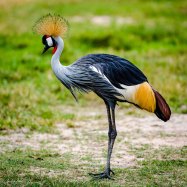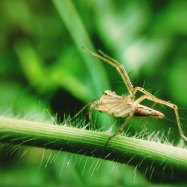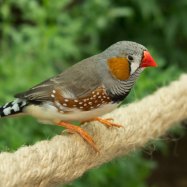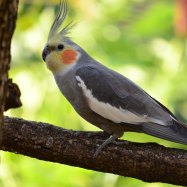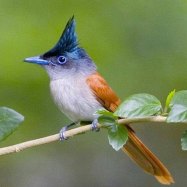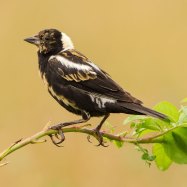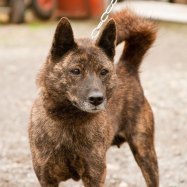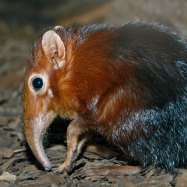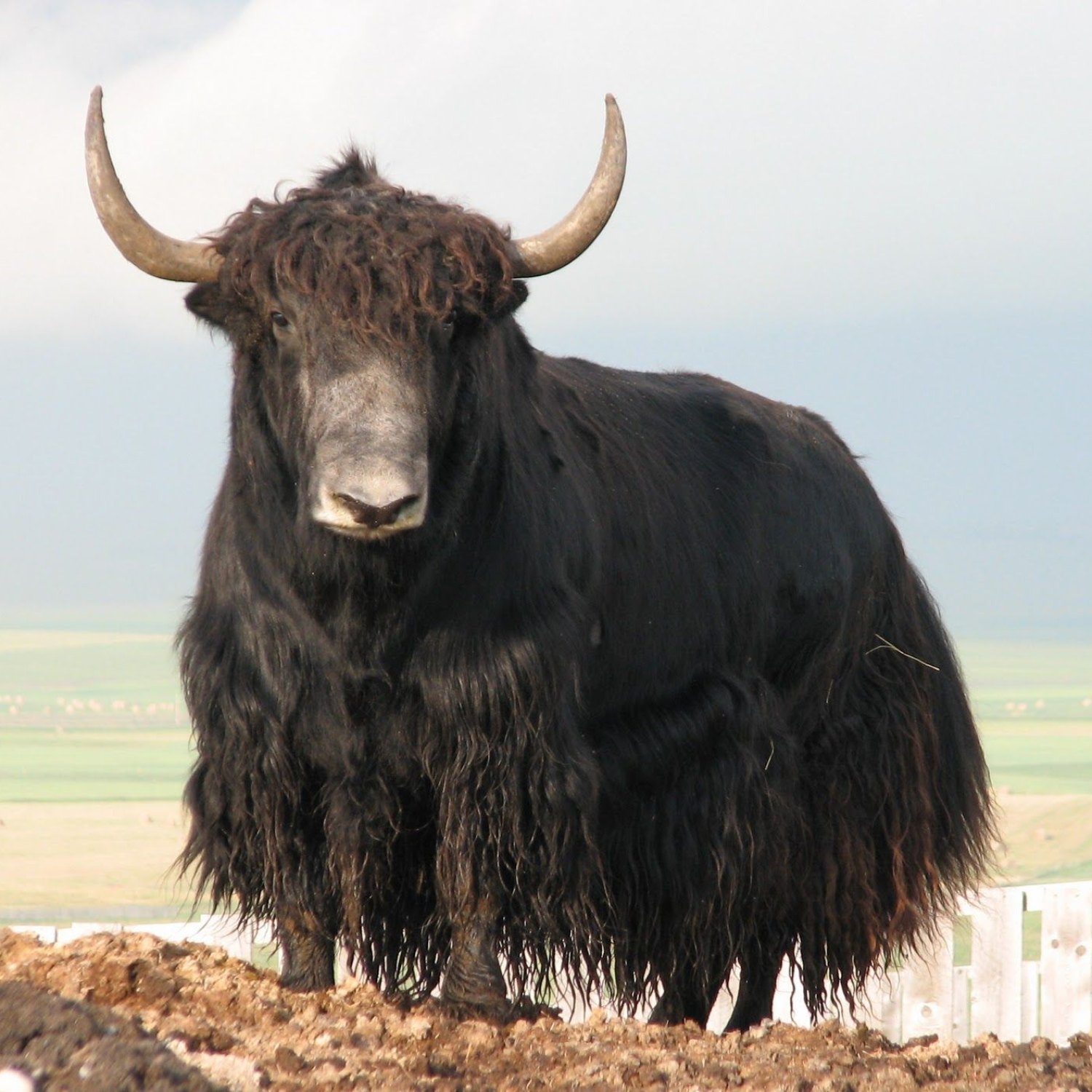
Yak
1.5 to 2.2 meters
Meet the majestic Yak, a bovine native to the Himalayan region. Standing at 1.5 to 2.2 meters, this large and robust animal is a sight to behold. They are part of the Bovidae family, which includes domesticated cattle and goats. With its unique appearance and adaptability to high altitudes, the Yak is an important animal for the local communities in the Himalayas.
Animal Details Summary:
Common Name: Yak
Kingdom: Animalia
Habitat: High altitude grasslands and meadows
The Majestic Yak: Surviving the High Altitudes of Central Asia
In today's world, where artificial intelligence and technology dominate, it's hard to imagine that there's still an animal that has managed to thrive and adapt to one of the harshest environments on Earth – the Yak. This magnificent animal, also known scientifically as Bos mutus, can be found in the high altitude grasslands and meadows of Central Asia.The Origins of the Yak
The yak is believed to have originated from Tibet, China, and can still be found in this region today. However, its geographical distribution has expanded to neighboring countries in Central Asia, such as India, Nepal, Bhutan, and Mongolia Yak. The Himalayan region, with its rugged terrain and extreme weather conditions, provides the perfect habitat for these creatures to survive and thrive.Defining Features of the Yak
The yak is a large and robust mammal belonging to the Bovidae family. It has a dark brown to black coloration, which helps it blend in with its surroundings. Its thick coat consists of long, coarse hair that protects it from the harsh winter temperatures, making it well-suited to the harsh environment it lives in.On average, yaks can measure between 1.5 to 2.2 meters in length and can weigh anywhere from 300 to 1,000 kilograms. This makes them one of the largest land animals in the Himalayan region. With their thick, muscular bodies and sturdy legs, yaks are well-equipped to traverse the rugged terrain of their habitat Yorkie Bichon.
A Herbivore at Heart
Yaks are herbivorous animals, meaning that they solely feed on plant material. They have adapted to survive on the sparse vegetation found in high altitude areas, making them vital contributors to the ecosystem. In fact, yaks play a crucial role in maintaining the balance of nature in the Himalayan region. They are often seen grazing in the meadows and pastures, feeding on grass, herbs, and wildflowers.Surviving in Extreme Conditions
One of the most remarkable things about yaks is their ability to survive in the extreme conditions of the Himalayan region. With temperatures dropping as low as -40 degrees Celsius, yaks have had to adapt in various ways to withstand these harsh conditions.Their thick coat does not only protect them from the cold, but it also serves as insulation against the heat, helping them maintain a stable body temperature. Additionally, yaks have a unique circulatory system that helps them survive in high altitudes. Their lungs and heart are much larger than other mammals of the same size, enabling them to take in and deliver more oxygen to their bodies.
A Helping Hand in Local Communities
For centuries, yaks have been an essential part of the local communities in the Himalayan region. The herders, known as Drokpas, rely on yaks for transportation, milk, and meat, making them an integral part of their traditional way of life. In recent years, yaks have also been used as pack animals for mountain trekking and expeditions, attracting tourists from all over the world.A Need for Conservation
Despite the yak's resilience and adaptability, they are still considered a vulnerable species by the International Union for Conservation of Nature (IUCN). This is due to various factors, such as climate change, habitat loss, and overgrazing by domesticated animals. In recent years, the population of yaks has significantly decreased, putting them at risk of extinction.Efforts are being made by local governments and conservation organizations to protect and preserve the yak population. The Yak Conservation Center in China has been actively involved in research and breeding programs, aiming to increase the number of yaks in the wild. Additionally, ecotourism initiatives have also been implemented, allowing tourists to witness these majestic creatures in their natural habitat, all while contributing to their conservation.
The Yak and Its Connection to Natural Language Processing
The yak, with its unique features and survival in extreme conditions, has attracted the attention of scientists and researchers. In recent years, yaks have been used as a model animal in studies involving high altitude physiology and adaptation. Researchers have also found that the unique circulatory system of yaks could provide insights into human health, specifically in areas such as pulmonary hypertension and heart diseases.Additionally, in the field of Natural Language Processing (NLP), the yak has been used as a test subject for speech synthesis models. With its distinct vocalizations, yaks have helped researchers advance the understanding and development of speech synthesis technology.
In Conclusion
The yak is a fascinating creature that has survived and adapted to one of the most challenging environments on Earth. Its importance in the local communities of the Himalayan region and its contributions to the ecosystem make it a vital species to protect and conserve. With the efforts of conservationists and researchers, we can hope to see the yak population thrive once again and continue to amaze us with its resilience and adaptability.

Yak
Animal Details Yak - Scientific Name: Bos mutus
- Category: Animals Y
- Scientific Name: Bos mutus
- Common Name: Yak
- Kingdom: Animalia
- Phylum: Chordata
- Class: Mammalia
- Order: Artiodactyla
- Family: Bovidae
- Habitat: High altitude grasslands and meadows
- Feeding Method: Herbivorous
- Geographical Distribution: Central Asia
- Country of Origin: Tibet, China
- Location: Himalayan region
- Animal Coloration: Dark brown to black
- Body Shape: Large and robust
- Length: 1.5 to 2.2 meters
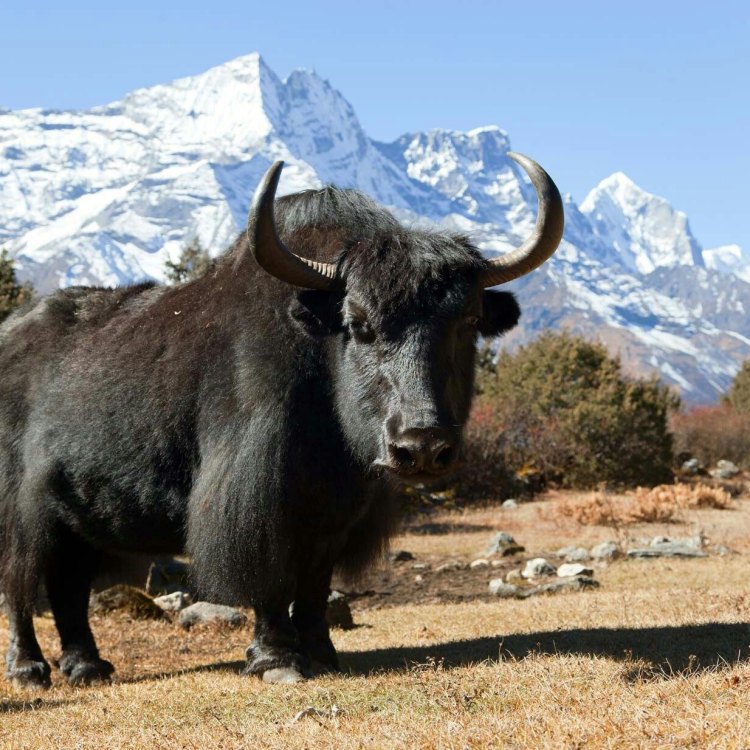
Yak
- Adult Size: Shoulder height: 1.2 to 1.5 meters, Weight: 400 to 1,200 kilograms
- Average Lifespan: 20-25 years
- Reproduction: Sexual
- Reproductive Behavior: Polygynous
- Sound or Call: Loud grunts and roars
- Migration Pattern: Altitude migration
- Social Groups: Herds
- Behavior: Solitary or gregarious depending on the season
- Threats: Habitat loss, poaching
- Conservation Status: Vulnerable
- Impact on Ecosystem: Key herbivores shaping the alpine ecosystem
- Human Use: Milk, meat, fiber, and as pack animals
- Distinctive Features: Long, shaggy hair and large horns
- Interesting Facts: Yak's hair is used for making warm clothing and tents in Tibet
- Predator: Snow leopards, wolves, and bears
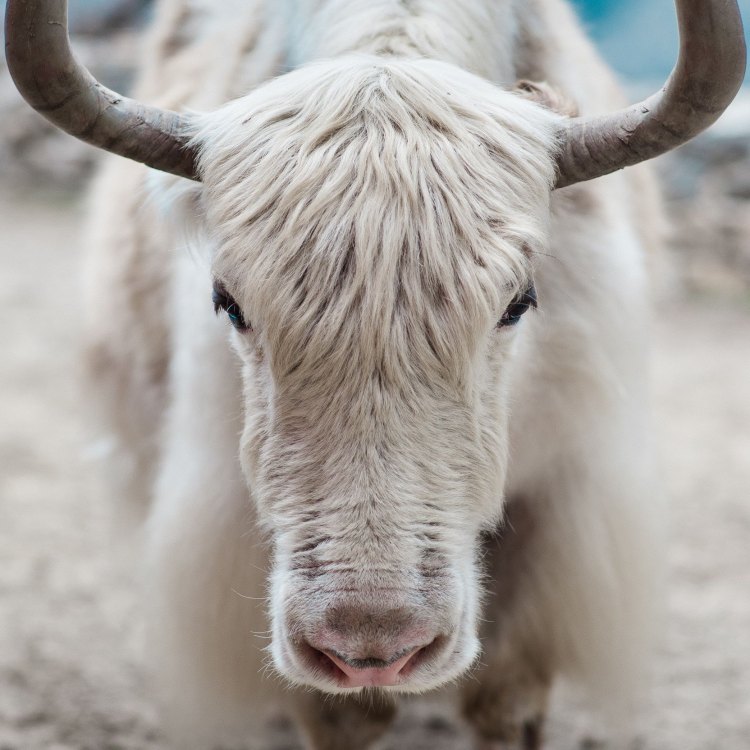
Bos mutus
The Mighty Yak: A Key Player in the High Altitude Ecosystem
At first glance, the yak may seem like just another farm animal with long hair and large horns. But don't be fooled by its unassuming appearance; this majestic creature plays a crucial role in the alpine ecosystem and has a fascinating history of coexisting with humans.The yak, also known as Bos grunniens, is a long-haired bovine found in the high-altitude regions of Central Asia, particularly in Tibet, Mongolia, and the Himalayan region. They are well adapted to harsh weather conditions, making the mountainous regions their natural habitat PeaceOfAnimals.Com. Let's dive deeper into the unique features and behaviors of this incredible animal.
Size, Weight, and Reproduction
Yaks are large animals, with the average adult reaching a shoulder height of 1.2 to 1.5 meters and weighing between 400 to 1,200 kilograms. These impressive statistics are necessary for their survival in the high-altitude environment, where food is scarce, and temperatures can drop to -40 degrees Celsius.In terms of reproduction, yaks are sexual animals and have a polygynous breeding system, where one male mates with multiple females. This behavior is advantageous for their species, as it ensures a diverse gene pool and increases their chances of survival.
Sound and Migration
One of the first things you may notice about yaks is their loud grunts and roars. These sounds are not just for show but serve as communication within their herds Yellow Bellied Sea Snake. Yaks are social animals, and they form herds of up to 30 individuals, led by a dominant male.When it comes to migration, yaks have an interesting altitude migration pattern. During the summer, when the snow melts and grass is plentiful, they move to higher elevations. In the winter, when food becomes scarce, they descend to lower elevations. This migration helps them find adequate food sources and stay protected from harsh weather conditions.
Solitary or Gregarious Behavior?
While yaks are generally social animals and prefer to stay in herds, their behavior can switch depending on the season. In the summer, when food is abundant, they are more gregarious, and herds can merge to form groups of up to 200 individuals. However, in the harsh winter months, they become more solitary, foraging for food on their own.Threats and Conservation Status
Like many other wild animals, yaks are facing numerous threats in their natural habitat. Habitat loss due to human activities, such as mining and infrastructure development, is a significant concern. Additionally, yaks are hunted for their meat, hair, and horns, which are used in traditional medicine. These factors have contributed to the yak's vulnerable conservation status, as listed by the International Union for Conservation of Nature (IUCN).Impact on the Ecosystem
Despite being a vulnerable species, yaks play a critical role in shaping the alpine ecosystem. As large herbivores, they have a significant impact on plant growth and distribution. They graze on grasses, shrubs, and herbs, keeping the vegetation in check and preventing one species from overpowering the others. Their grazing also helps maintain a healthy balance between the different plant populations, which is essential for the survival of other animal species.Furthermore, the manure of yaks acts as a natural fertilizer, enriching the soil and promoting the growth of new plants. This is especially important in the harsh environment of the high-altitude regions, where plant growth is limited.
Yak's Relationship with Humans
The yak's interaction with humans can be traced back to thousands of years ago when they were first domesticated. Tibetans have been using yaks to transport goods, as pack animals and for plowing fields since ancient times. They are also a reliable source of milk, meat, and fiber, making them an essential part of Tibetan and Mongolian culture and cuisine.One fascinating use of yak's hair in Tibet is for making warm clothing and tents. The long, shaggy hair of yaks provides excellent insulation, making it perfect for staying warm in the freezing temperatures of the Himalayas. These warm and durable garments have been used by nomadic communities for centuries and are still popular today.
Predators and Survival Adaptations
Living in a harsh environment with extreme weather conditions, yaks have had to adapt to survive. Their thick, shaggy hair serves as insulation, protecting them from the cold and harsh winds. Their large, curved horns are used for defense against predators, mainly snow leopards, wolves, and bears.Another fascinating survival adaptation of yaks is their ability to withstand high altitudes. These animals have a unique set of lungs that allow them to extract oxygen efficiently from thin air. They also have a specialized digestive system that helps them extract the maximum nutrients from their food, which is vital in the low-oxygen environment of the mountains.
The Importance of Yak Conservation
The threats faced by yaks and their vulnerable conservation status highlight the need for conservation efforts. Organizations like the Snow Leopard Trust and the International Yak Association are working towards protecting yaks and their habitat. By raising awareness, conducting research, and implementing conservation initiatives, these organizations are paving the way for a sustainable future for yaks.Additionally, responsible tourism and sustainable yak farming practices can also play a crucial role in preserving these majestic creatures. In some areas, traditional yak herding practices have been adapted to promote sustainable grazing and preserve the biodiversity of the ecosystem.
In Conclusion
Yaks are more than just a farm animal; they are an essential and unique part of the alpine ecosystem. Their adaptation to harsh weather and their cooperation with humans has allowed them to thrive in the mountains for centuries. However, with increasing human activity and climate change, their survival is under threat. It is our responsibility to raise awareness and take action to preserve the yak's habitat and ensure their survival for future generations. After all, the mighty yak is not only a key player in the high-altitude ecosystem but also an integral part of the cultural heritage and livelihoods of many communities.
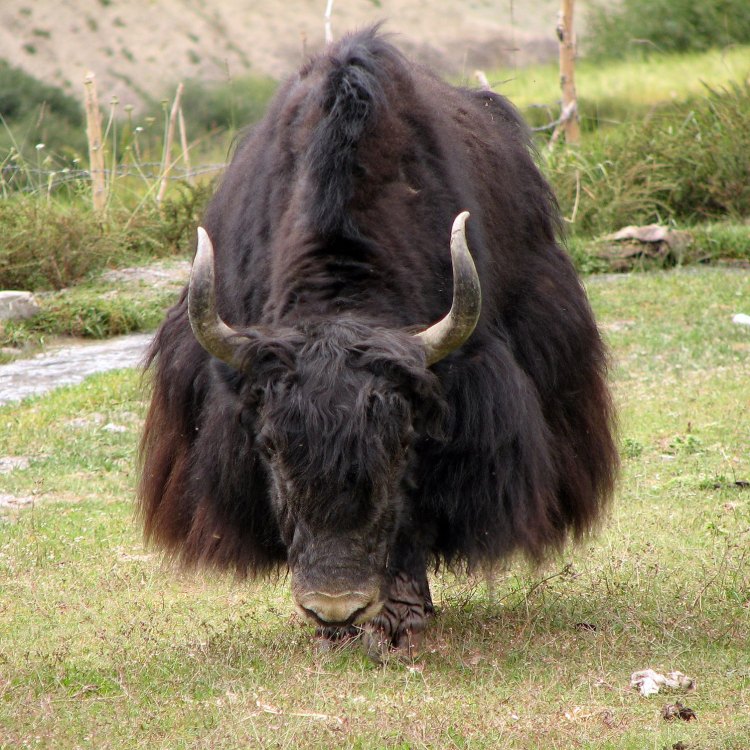
The Majestic Yak: Surviving the High Altitudes of Central Asia
Disclaimer: The content provided is for informational purposes only. We cannot guarantee the accuracy of the information on this page 100%. All information provided here may change without prior notice.


